Lord Neuberger is bidding to become the thinking lawyer’s judge, a worthy successor to the late and lamented Lord Bingham.
He is proceeding through lectures at a canter: the Robert Alexander memorial lecture this month, the Judicial Studies Board last.
There must be a danger that he is getting through topics so fast – the rule of law, parliamentary supremacy, appropriate length of court judgments – that some of his effect may be muted.
So, let us catch one of the hares that he has sent running: the issue of court broadcasting.
You may remember that the subject has had a relatively recent run-out. Lord Falconer issued a consultation paper on broadcasting and the courts in November 2004.
He came across as an enthusiastic supporter of reform and commissioned a six-week pilot in the Court of Appeal.
In the event, his successor, Jack Straw, bottled out of any change, accepting that there were ‘powerful’ reasons for not allowing cameras into the courts.
It was muttered at the time that the true cause of his change of heart was fear that judges would seize the chance of a microphone to sound off on the subject of Labour’s incoherent criminal justice policies.
Thus, the current position remains that section 41 of the Criminal Justice Act 1925 criminalises the taking or attempted taking ‘in any court [of] any photograph’.
As a side wind, the act underwrote the historic post of courtroom artist – a post that requires an alliance of good memory, high draftsmanship and a quick technique.
Courtroom artists may make notes in courts but not sketch; a slightly difficult distinction to maintain now that the lord chief justice has just given tweeting journalists the green light.
The prohibition on photographs, now extended to film, arose in the wake of the publication of a number of photographs of celebrated murderers.
The best known is probably that of Frederick Seddon being sentenced to death by a black-capped Mr Justice Bucknill.
The final straw may have been provided by a solicitor, Major Armstrong, (who famously said ‘Excuse fingers’ as he passed over a scone laced with arsenic to a troublesome rival) snapped in court in 1922.
Concern at the time focused more on undesirable sensationalism than interference with justice.
The prohibition has sparked an impasse that has remained ever since.
Virtually everyone agrees that courts should, in principle, provide a ‘public hearing’, something guaranteed by the European Convention on Human Rights.
The public, for their part, demonstrate a continuing interest that increases, alas, with the salaciousness of the crime.
Those who have the time, persistence and opportunity can fill the public benches at the court.
However, the judges will enforce a ban on visual coverage in the media. How can these conflicts be reconciled?
Jurisdictions vary in their approach. Scotland will allow broadcasting under strictly controlled conditions.
The US has a variety of practices. California riveted us all with compelling coverage of the OJ Simpson trial in 1995.
Yet the US Supreme Court bans cameras in its august courtroom.
It will, however, release audio coverage of argument and opinions. Pending legislation in both houses of Congress would, however, require film coverage.
Canada’s Supreme Court allows live webcasting. Australia broadcasts selected clips from its federal court.
Pressure on witnesses
The ban on broadcasting does not apply to inquiries.
Thus, they have provided the location of much recent debate in the UK.
Lord Hutton refused the broadcasting of all of his inquiry on Iraq on the ground that it would place too much pressure on witnesses: ‘every answer, every qualification … every hesitation, every facial expression and every alteration of their posture will be watched by hundreds of thousands of people on their television screens and will be liable to be replayed on a number of occasions’.
Notably, the family of David Kelly agreed with his decision. Lord Phillips did allow audio broadcasting of the BSE inquiry. Lords Hutton, Saville (Bloody Sunday) and Cullen (Ladbroke Grove) allowed some televising of opening and closing statements.
The UK Supreme Court is statutorily exempt from the 1925 act but, alas, Lord Neuberger reported in his lecture that ‘there appears to have been little appetite for broadcasters to televise its proceedings’.
This gets to the nub of a problem.
The media do not want access to the worthy; they want access to the drama.
They want trials and the bloodier the crime, the better.
Distaste for vulgarity, the original basis of the ban, no longer seems a strong enough objection.
Surely, the only admissible reasons are interference with the process of justice and protection of the young and vulnerable.
The experience of other courts and of our own Supreme Court is that judges and advocates soon learn to ignore the cameras.
Therefore the objection only really lies in any effect on others.
The discussion of media coverage of inquiries suggests a sensible way forward.
There should be no filming of witnesses or of a jury. Courtroom artists will continue to ply their trade.
But why should not all else be filmed if the media can do so unobtrusively?
This would remove the ban from all appeals that solely concern points of law; some parts of a criminal trial such as the judge’s summing up and sentencing; perhaps even opening and closing speeches.
Nervousness about the effect on the jury could be met by releasing such footage only after conviction or acquittal.
As Lord Neuberger said: ‘Public scrutiny of the courts is an essential means by which we ensure that judges do justice according to law, and thereby secure public confidence’.
May the government respond to his nudge with some action.
Roger Smith is director of the law reform and human rights organisation Justice


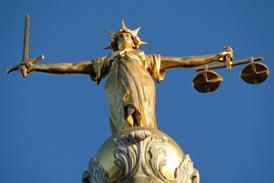
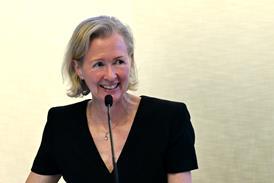

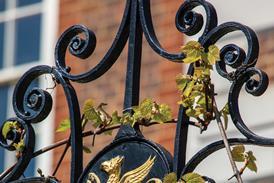








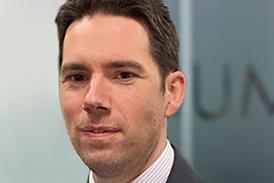


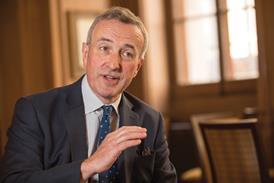


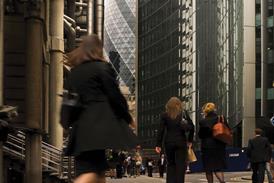






No comments yet